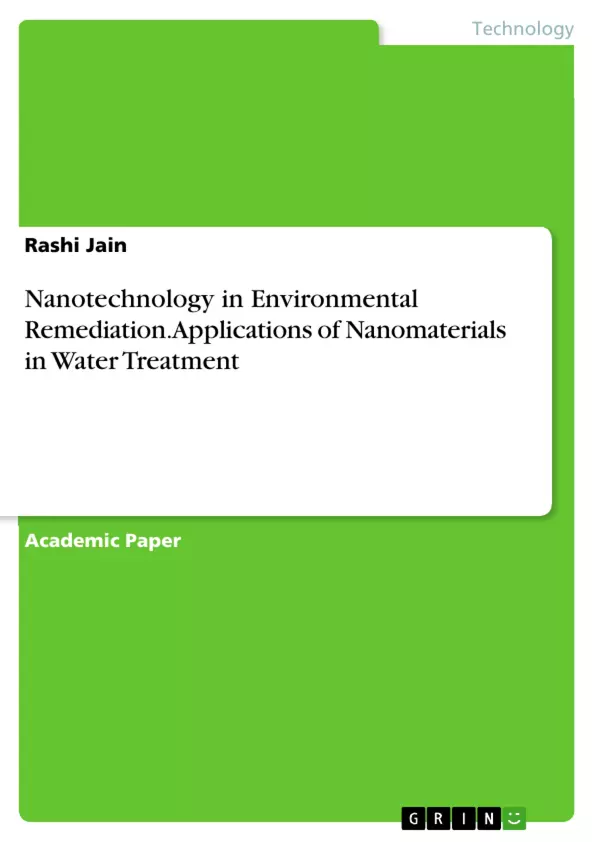Though in their nascent phase, nanomaterials possess a glimmer of potential for forthcoming endeavours in the realm of water treatment. In contemplating the vast expanse of possibilities, one cannot help but be captivated by the potential that lies within the utilisation of nanomaterials in the realm of water treatment. It is a concept that holds the promise of transforming our very approach to the daunting challenges posed by water pollution, and in doing so, paving the way towards a future that is not only sustainable, but also harmonious with the delicate balance of our planet. Through the utilisation of the extraordinary attributes possessed by nanoceramics, a realm of possibilities unfolds before us, wherein we may cultivate methodologies that are not only more proficient but also more potent in the realm of industrial wastewater treatment, thereby safeguarding our precious environment. As the relentless march of progress propels research in this domain ever forward, a tantalising horizon of possibilities unfurls before us. With bated breath, we await the advent of even more ingenious and groundbreaking solutions, poised to tackle the formidable quandaries posed by water pollution.
Inhaltsverzeichnis (Table of Contents)
- Introduction
- Adsorption of pollutants
- Ceramic-based nanomaterials
- Adsorbents in pollutant mitigation
- Disinfection
- Silver nanoparticles
- Other nanomaterials for disinfection
- Membrane filtration
Zielsetzung und Themenschwerpunkte (Objectives and Key Themes)
This work explores the multifaceted potential of nanomaterials in water treatment. It investigates the use of nanomaterials in various water treatment methods, aiming to provide a comprehensive understanding of their capabilities and limitations.
- The application of nanomaterials in water treatment processes.
- The unique properties of nanomaterials that make them suitable for water treatment.
- The potential benefits and challenges associated with using nanomaterials in water treatment.
- The implications of nanomaterial-based water treatment methods for environmental sustainability.
- The future directions of research and development in nanomaterial-based water treatment.
Zusammenfassung der Kapitel (Chapter Summaries)
- Introduction: This chapter establishes the context and significance of nanomaterials in water treatment, highlighting their potential for addressing water pollution challenges.
- Adsorption of pollutants: This chapter delves into the use of ceramic-based nanomaterials as efficient adsorbents for various pollutants, discussing their advantages over conventional adsorbents.
- Disinfection: This chapter examines the antimicrobial properties of silver nanoparticles and their potential for water disinfection, exploring the advantages of using nanomaterials over traditional chemical disinfectants.
Schlüsselwörter (Keywords)
The key focus areas of this work encompass nanomaterials, water treatment, pollution control, adsorption, disinfection, membrane filtration, environmental sustainability, and the application of innovative technologies to address water-related challenges.
- Quote paper
- Rashi Jain (Author), 2023, Nanotechnology in Environmental Remediation. Applications of Nanomaterials in Water Treatment, Munich, GRIN Verlag, https://www.hausarbeiten.de/document/1438039


